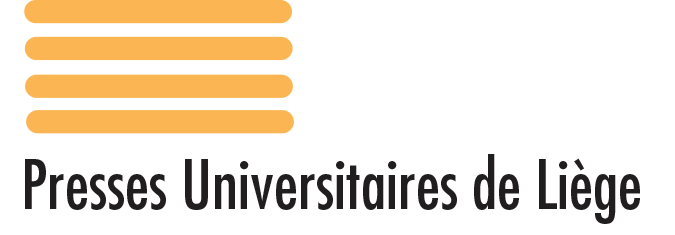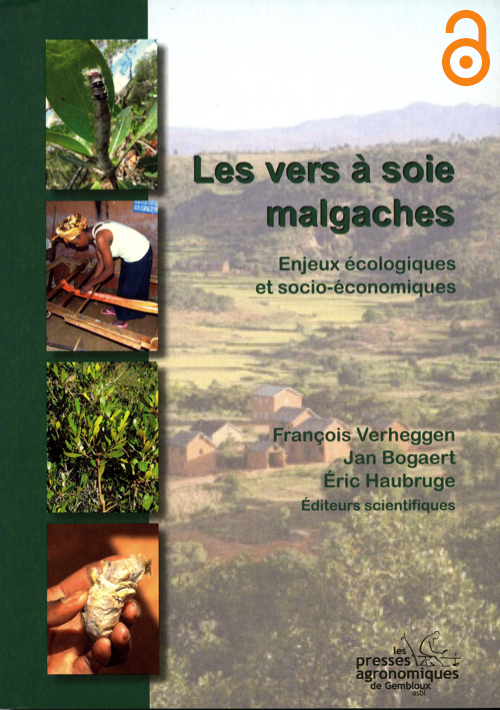Les vers à soie malgaches. Enjeux écologiques et socio-économiques
27,00 €
par VERHEGGE, François (éd.) ; BOGAERT, Jan (éd.) et HAUBRUGE, Eric (éd.)
Cet ouvrage reflète les réalisations et activités scientifiques du projet de coopération universitaire « Gestion et Valorisation durable du ver à soie endémique Borocera cajani en milieu forestier dans la région d’Antananarivo » financé par la Commission Universitaire pour le Développement (CIUF-CUD). Une première section de l’ouvrage porte sur les aspects biologiques et écologiques des vers à soie à Madagascar – avec l’accent sur la landibe (Borocera cajanus Vinson, 1863). La deuxième section étudie les dimensions écologiques et botaniques de l’habitat du ver à soie, à savoir les formations de tapia (Uapaca bojeri Baill.), principalement à travers les aspects sylvicoles et botaniques, les causes et indicateurs de sa dégradation, etc. La troisième section renseigne sur la valorisation de la filière soie et couvre une diversité d’approches, allant de l’inventaire des ressources sauvages comestibles et leurs caractéristiques chimiques, passant par le rôle de la soie dans l’économie rurale, allant jusqu’aux connaissances et savoir-faire des communautés locales. Le contexte socio-institutionnel ainsi que les interactions entre les acteurs concernés par la filière complètent ce volet. L’ouvrage est composé de 21 contributions scientifiques, rédigées par 33 auteurs ; plusieurs ont déjà fait l’objet d’une publication ailleurs. Ce livre s’adresse à tous ceux passionnés par la biodiversité et la société malgache, et par la valorisation potentielle des ressources naturelles et socioculturelles uniques de la Grande Ile dans la perspective du développement durable.
This book (Malagasy silkworms. Ecological and sociological issues) reflects the achievements and scientific activities of the university cooperation project for the ‘Management and sustainable enhancement of the endemic silkworm Borocera cajani in a forested area of the Antananarivo region » ‘financed by the CIUF-CUD (University Development Cooperation in Belgium). The first section of the work deals with the biological and ecological aspects of silkworms in Madagascar-with emphasis on landibe (Borocera cajanus Vinson, 1863). The second section studies the ecological and botanical dimensions of the habitat of the species, namely, tapia formations (Uapaca bojeri Baill.), by focussing on the silvicultural and botanical aspects, the causes and indicators of its decline, etc. The third section provides information about the valorization of the silk industry and covers a variety of approaches including the compilation of an inventory of edible wild plant resources and their chemical characteristics. This section also looks at the role played by silk in the rural economy, and the knowledge and skills of local communities. The third section ends by taking a look at the socio-institutional context as well as interactions between the players involved in the industry. This work comprises 21 scientific contributions written by 33 authors ; some of them are in english and all the abstracts are written in french and in english. Several chapters have already been published elsewhere. This book is aimed at all those who are passionately interested in Malagasy society and biodiversity, and the potential value of this large island in the context of sustainable development.
Informations complémentaires
| Poids | 650 g |
|---|---|
| ISBN | 978-2-87016-128-9 |
| Année | 2013 |
| Pages | 326 pages, 47 fig., 56 tabl., 41 photos en couleur + 1 CD-ROM, in French and English. |
| Open Access | Distribué suivant les termes et les conditions de la licence CC-BY NC SA (https://creativecommons.org/licenses/by-nc-sa/4.0/deed.fr) |
| Version électronique |



